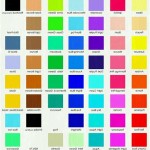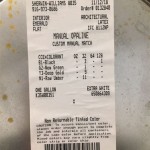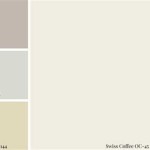Can Image Capture Technology Accurately Match Paint Colors?
The desire to match a paint color quickly and efficiently is a common one for homeowners, decorators, and contractors alike. The increasing sophistication of smartphone camera technology and associated software has led to the development of various paint matching applications. These apps claim to analyze a photograph of a painted surface and provide a matching paint color, either from a specific manufacturer or a generic palette. However, the accuracy and reliability of this technology are subject to a number of factors, making it crucial to understand the limitations and potential pitfalls of relying solely on image capture for paint color matching.
While the concept of taking a picture and instantly finding a near-perfect paint match is attractive, the reality is more complex. Several variables influence the quality of the image captured, the accuracy of the color analysis performed by the app, and ultimately, the success of finding a satisfactory match. A detailed examination of these factors is essential for understanding whether or not image capture technology can truly provide reliable paint color matching.
Key Point 1: The Impact of Lighting and Camera Settings on Color Accuracy
One of the most significant challenges in using image capture for paint matching is the influence of lighting conditions. The appearance of a color changes drastically based on the type of light illuminating it. Natural daylight, incandescent light, fluorescent light, and LED light all have different color temperatures, which can alter the perceived hue and saturation of a paint color. For example, a paint color photographed under warm incandescent light might appear more yellow than it actually is, while the same color photographed under cool fluorescent light might appear more blue.
The angle of the light source also plays a crucial role. Direct sunlight can create harsh shadows and highlights, distorting the true color of the surface. Diffused light, on the other hand, provides a more even illumination, allowing for a more accurate representation of the color. Furthermore, the presence of any reflective surfaces in the vicinity can also influence the color captured by the camera.
In addition to lighting, camera settings also significantly impact color accuracy. Most smartphone cameras use automatic white balance settings, which attempt to correct for color casts in the lighting. However, these automatic settings are not always accurate, particularly in complex lighting situations. Manually adjusting the white balance can improve color accuracy, but requires knowledge of color temperature and camera settings.
Furthermore, the camera's resolution and color depth affect the level of detail captured in the image. A low-resolution image may lack the fine details necessary to accurately analyze the color, while a limited color depth may result in a loss of subtle variations in hue and saturation. Finally, the camera's lens can introduce distortions and aberrations, which can also affect color accuracy. Therefore, relying on an unedited, automatically-adjusted photograph from a standard smartphone often leads to inaccurate color representation.
Key Point 2: Limitations of Color Analysis Algorithms and Paint Databases
Even if a perfect image is captured, the accuracy of the paint match ultimately depends on the color analysis algorithms used by the app and the comprehensiveness of the paint databases it accesses. These algorithms analyze the color information in the image and compare it to a database of known paint colors. However, the accuracy of this process is limited by several factors.
Firstly, the algorithms used by different paint matching apps vary in their sophistication and accuracy. Some apps may simply analyze the average color of a selected area, while others may use more advanced techniques, such as analyzing the color distribution and texture of the surface. The more sophisticated the algorithm, the more likely it is to produce an accurate match.
Secondly, the comprehensiveness of the paint database is crucial. A database that includes a wide range of paint colors from various manufacturers is more likely to contain a close match than a database that is limited to a few brands or colors. Furthermore, the database needs to be regularly updated to include new paint colors and discontinued shades.
Thirdly, the algorithm needs to account for the metamerism effect. Metamerism refers to the phenomenon where two colors appear to match under one lighting condition but not under another. This is because the two colors may have different spectral reflectance curves, meaning they reflect different wavelengths of light differently. A paint matching app that does not account for metamerism may produce a match that looks good under one light but not under another.
Another consideration is the potential for color fading or aging of the original paint. Over time, paint colors can fade or change due to exposure to sunlight, moisture, and other environmental factors. A paint matching app that does not account for this can produce a match that is significantly different from the original color. Therefore, accurate paint color matching requires not only advanced algorithms and comprehensive database but also an understanding of the complexities of color perception and the aging process of paint.
Key Point 3: The Importance of Physical Color Verification and Professional Tools
Given the limitations of image capture and color analysis algorithms, it is crucial to verify the accuracy of any paint match obtained through these methods using physical color samples and professional tools. Relying solely on a digital match without confirming it with a physical sample can lead to unsatisfactory results and wasted time and money.
The best way to verify a paint match is to obtain a paint chip or sample from the manufacturer or paint store and compare it directly to the painted surface. This allows for a side-by-side comparison under different lighting conditions, which can help to identify any discrepancies in color. Most paint stores offer small sample sizes of paint that can be purchased for this purpose. Applying a small amount of the sample paint to an inconspicuous area of the wall and allowing it to dry is an effective way to determine if the match is acceptable.
Professional paint matching tools, such as spectrophotometers and colorimeters, provide a more accurate and reliable method of color analysis. These devices measure the spectral reflectance of the surface and provide a precise color reading that can be used to formulate a custom paint match. While these tools are typically more expensive and require specialized training to use, they offer a level of accuracy that is simply not achievable with image capture technology.
In addition, consulting with a paint professional is always recommended. Experienced paint professionals have a trained eye for color and can provide valuable advice on selecting the right paint color and finish for a particular application. They can also help to identify any potential issues, such as color fading or metamerism, that may affect the accuracy of the paint match. Combining digital paint matching tools with physical color verification and professional consultation provides the most reliable path to achieving a satisfactory paint match.
Ultimately, while image capture technology offers a convenient way to initiate the paint matching process, it should not be considered a substitute for accurate physical verification and the expertise of paint professionals. The numerous factors that influence color perception and image capture accuracy necessitate a multi-faceted approach to ensure a satisfactory and lasting paint match.

Top 7 Color Match Paint Apps

How To Match Paint Colors On Wall Get Sample

How To Match Paint Colors On Anything

Color Tools Sherwin Williams

3 Ways To Match Paint Colors Wikihow

How To Match A Paint Color From Picture Entri Ways

3 Ways To Match Paint Colors Wikihow

Discover The Color Portfolio App Browse Match And Visualize Your Perfect Paint Colour Benjamin Moore

How To Get A Color Sample Off Wall And Fix Again

Color Visualizer Sherwin Williams
Related Posts








